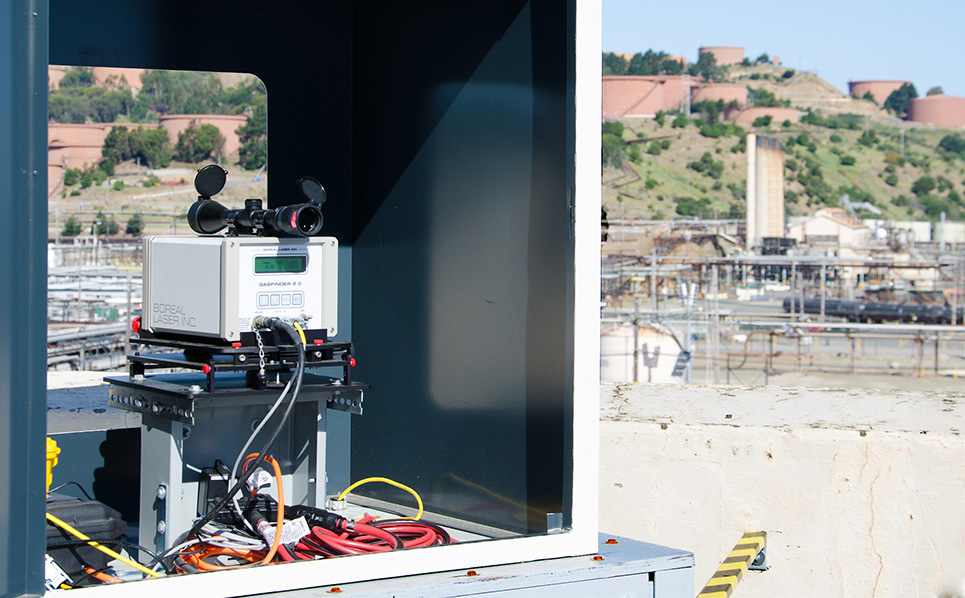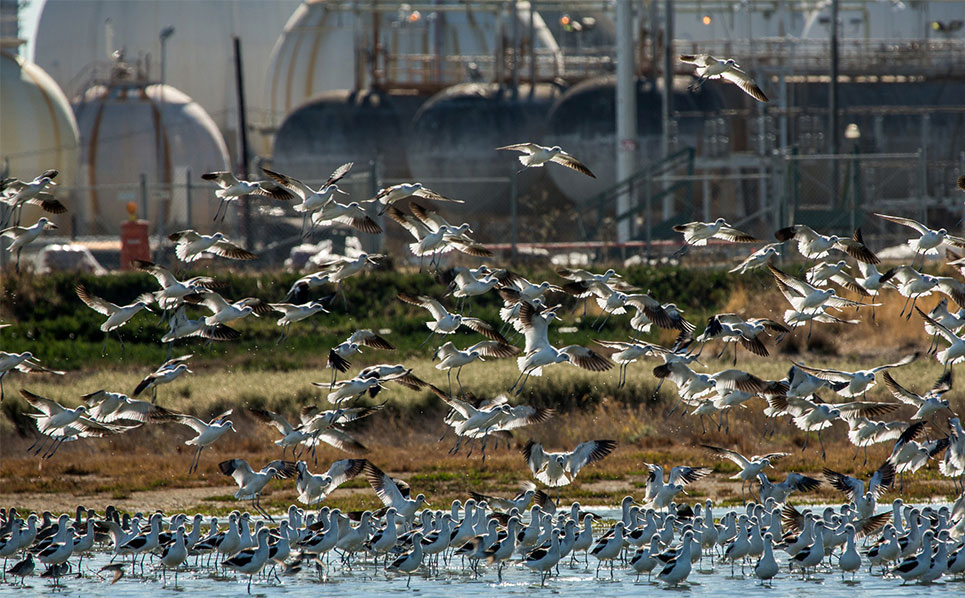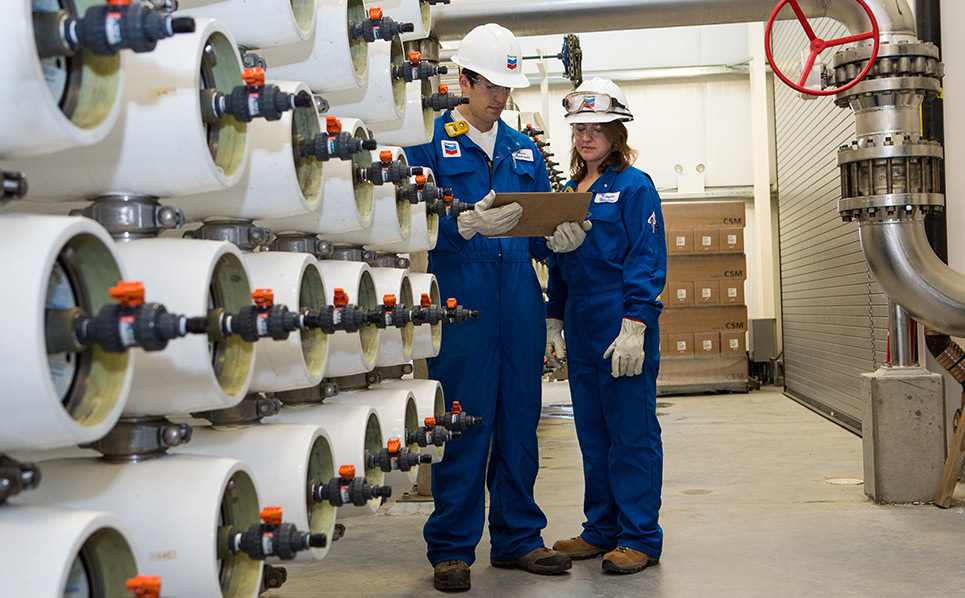protecting the environment
We’re a leader in environmental stewardship – reducing emission, minimizing flaring, improving energy efficiency and recycling water. We are continually working to improve our environmental performance.
Our Health, Environment and Safety team works to ensure that compliance with all government rules and requirements is embedded in our operations. It is our goal to minimize any potential impact on our neighbors, which is why we are continually investing in new equipment and technologies that help us to improve the performance of the refinery and minimize our environmental footprint.

air quality
Air monitoring systems are one example of a tool used to understand neighborhood air emissions and help the public get a better picture of the air quality in Richmond. Since 2014, the Refinery has funded a community air monitoring program in Richmond. The program is operated by an independent third-party expert, and provides real-time community air quality data, 24 hours a day, seven days a week.
Data is collected and reported from three stations along the Refinery’s fenceline and three neighborhood stations – North Richmond, Atchison Village and Point Richmond. The air monitoring systems being used in Richmond make up the most comprehensive program deployed at a Bay Area refinery to date.
Since the launch of the program, the air monitors have continually tracked air quality. Results show that air quality in Richmond is similar to the air quality the Bay Area Air Quality Management District is measuring in other Bay Area urban communities.
We are often asked about the “clouds” that are sometimes seen around the Refinery and how that affects air quality. Those “clouds” are actually just water vapor, or steam. Specialized cooling towers recycle hot water created during the refining process so it can be re-used in our operations. During the cooling process some of the hot water evaporates and is visible as water vapor or steam clouds. The color of the clouds is affected by the ambient weather and temperature.
Visit www.richmondairmonitoring.org for more information about community air monitoring and to see real-time air quality data.
Read our community guide to understanding refinery flares
conserving water
The Richmond Refinery has a long-standing history of investing in our ability to use recycled water in our operations. By replacing potable water (i.e., drinking water) with high-grade recycled water in our operations we conserve fresh drinking water. Our ability to use recycled water keeps millions of gallons of fresh water available every day for other uses by our community.
The Richmond Advanced Recycled Water Expansion (RARE) plant has made the Refinery the largest user of recycled water in the Bay Area. Built in collaboration with the East Bay Municipal Utilities District (EBMUD), the RARE plant is capable of producing 3.5 million gallons of high-quality recycled water each day.
Over the last three years, more than 40 percent of the water used at the Refinery is recycled. We use this water in our boilers to produce steam and electricity, which is used to manufacture gasoline, diesel and jet fuel and other transportation products.

protecting natural ecosystems
The Chevron Richmond Refinery is home to many different species including hundreds of species of birds who live on acres of protected wetlands.
We created the Richmond Water Enhancement Wetland by converting 90 acres of former wastewater treatment ponds into a vital wetland environment for many plant and animal species. The wetland now serves as a resting spot for migratory waterfowl whose habitat has been decreased by commercial development along the West Coast. Deep channels and dense areas of reeds and duck mounds create an attractive environment for waterfowl. During the spring and fall, an increasing variety of shorebirds seek refuge in the marsh. Presently, there are 103 different species of birds that use this new habitat.
We have also completed the Wildcat Creek Marsh Restoration Project on more than 250 acres of natural wetlands northeast of the refinery. Over the years, sediments had been deposited that cut off tidal access to these wetlands. Restoration included forming slough channels to the saltwater marsh. The tides flow through these wetlands and into two restored ponds. The wetlands now provide a critical habitat for two endangered species – the Salt Harvest Mouse and the California Clapper Rail.
The Chevron Richmond Refinery supports many Bay Area organizations dedicated to preserving wildlife.
